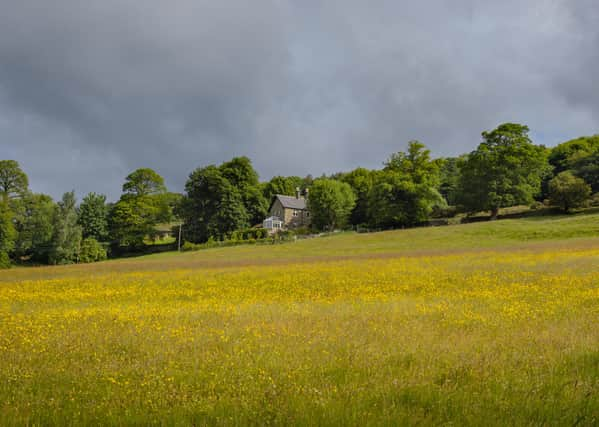Grow your own meadow campaign


Inspired by Plant Life’s No Mow May challenge, which encourages gardeners not to mow their lawns throughout the month of May, the guide outlines the Do’s and Don’ts to get a mini meadow project started.
Kelly Harmer, Biodiversity Officer at Nidderdale AONB said: “Creating your own mini meadow is actually quite easy, because the less you do, the better.
Advertisement
Hide AdAdvertisement
Hide Ad“Lockdown saw many of us with gardens become more aware of their value for our own wellbeing, and there are incredible benefits for our wildlife just in letting a patch of lawn grow.
“The humble garden lawn can be home to an astonishing diversity of wild flowers, and a mini meadow can boost nectar for more bees and other pollinators.”
According to Plant Life, the top three most abundant lawn flowers are daisy, white clover and selfheal.
Every Flower Counts found that 80 per cent of lawns supported the equivalent of around 400 bees a day from the nectar sugar produced by common flowers, such as dandelion.
Advertisement
Hide AdAdvertisement
Hide AdTo help pollinators, it’s best to leave patches of lawn completely unmown, with the general garden kept at one to two inches with monthly mowing, explain the experts.
Mowing actually helps flowers come back quicker. The ideal is to have a monthly cut, and an area set aside for a mini meadow and longer grass for floral diversity.
Kelly added: “It’s not just pollinators who will enjoy a mini meadow, as we humans have discovered a renewed appreciation for nature in the national lockdowns.
“Those lucky enough to have gardens can enjoy the diverse and beautiful flowers a mini meadow brings, and that summer buzz of bees.”
Advertisement
Hide AdAdvertisement
Hide AdMini-meadows are not the same as traditional wildflower meadows, which have drastically declined with more than 97 per cent of wildflower rich British meadows destroyed in the last century.
The AONB began a meadow project in Nidderdale several years ago with local landowners to help revive traditional meadows.
One example is a meadow in Pateley Bridge that was sown with locally harvested donor seed in 2016.
Nidderdale AONB is keen to create wildlife corridors, connecting meadows across the landscape, to help wildlife facing a wider climate crisis.
Advertisement
Hide AdAdvertisement
Hide AdKelly said: “True Dale meadow restoration is a journey that takes many years.
“Our 2020 survey of the Pateley Bridge meadow found 45 separate plant species, which is encouragingly high.
“It’s now an ideal donor field and could provide seeds for other restoration sites in the future.”